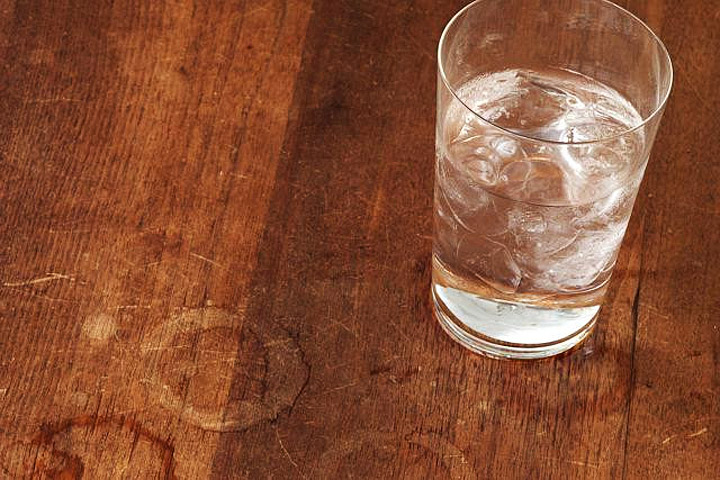
Wood furniture is beautiful, but it’s not impervious to the wear and tear of everyday life. To retain their looks, new and antique wood tables and chairs must be properly maintained. It’s for good reason that your parents sternly insisted that you use coasters: Water and wood are indeed natural enemies.
If the damage has already been done, and you now have to figure how to remove water stains from wood, don’t be discouraged—many have been there before you and successfully eliminated—or at least made significantly less visible—the unsightly marks that moisture can leave in its wake. In fact, for anyone researching the issue, it can be difficult to know where to start, not because there isn’t enough advice available, but because there’s so much. How do you know which of the many repair methods are most reliable? What follows are details on the three approaches that we and others have found to be the most effective. You may need to work through a bit of trial and error before discovering the trick that works in your case. Be patient, and good luck!
Water stains show up as white or light-colored rings or clouds. The light color is a sign that the moisture hasn’t reached the actual wood; rather, it’s trapped within the finish. (It’s when the stain is black or dark-colored that you have a real problem and should either refinish the piece yourself or consult a pro.)
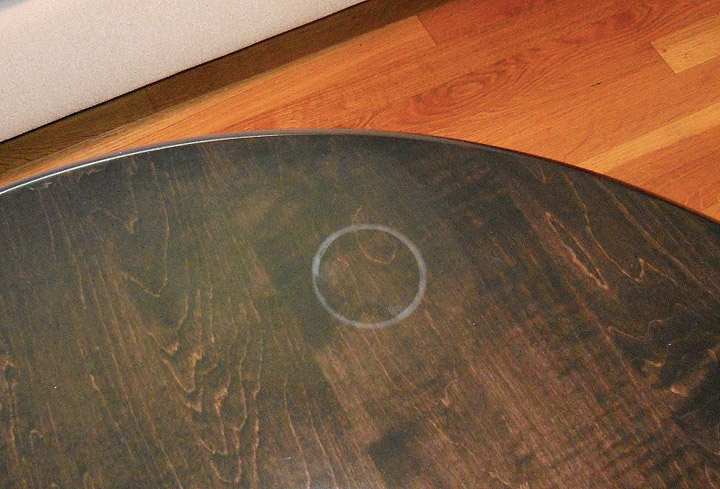
Method 1: Ironing
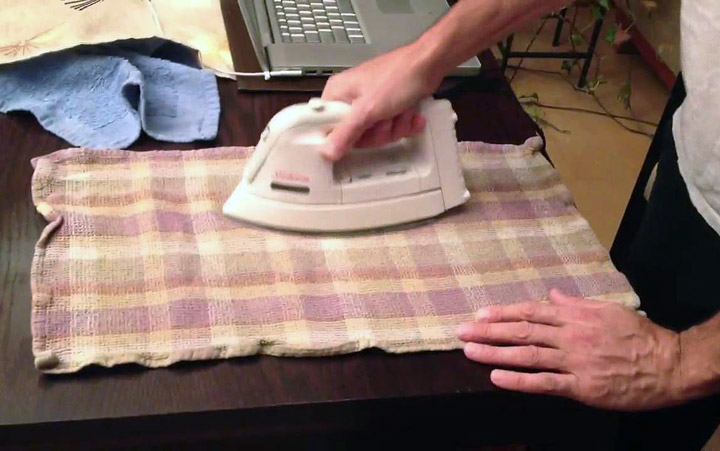
As with most stains, it helps to act quickly. If the stain has been there for only a few days, try this: Empty your clothes iron of all the water inside, then bring it into the room with the affected piece of furniture. Plug in the iron, then lay a cotton napkin, towel, or T-shirt over the stain. With the iron set on low, apply it briefly to the fabric before lifting the cloth to see if the ring has diminished. Repeat until (we hope) the white stain has disappeared. Alternatively, you can try using a hair dryer to achieve the same effect. Move the dryer back and forth over the area for about 10 minutes until the moisture evaporates.
Method 2: Mayonnaise
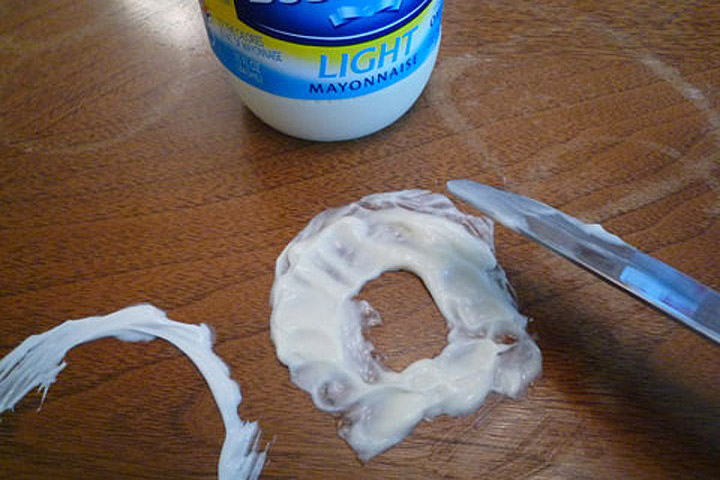
Assuming Method 1 gets no results, it’s worthwhile to experiment with what may at first sound like an odd thing to put on furniture: mayonnaise. Dab a bit onto a rag, then gently apply the mayonnaise directly to the stained area. Let it sit for at least an hour or as long as overnight, reapplying the mayonnaise if the initial coating dries out. If there’s no mayonnaise in your fridge, petroleum jelly may be used as an alternative. Either way, the idea is for the oil in these substances to seep into the finish, displacing the lodged moisture. Note that if you’re seeing some results but wish the remedy packed a little extra punch, consider bringing cigarette ashes into the equation. Many have reported that the penetrating power of oil works best when combined with the abrasiveness of cigarette ashes.
Method 3: Toothpaste
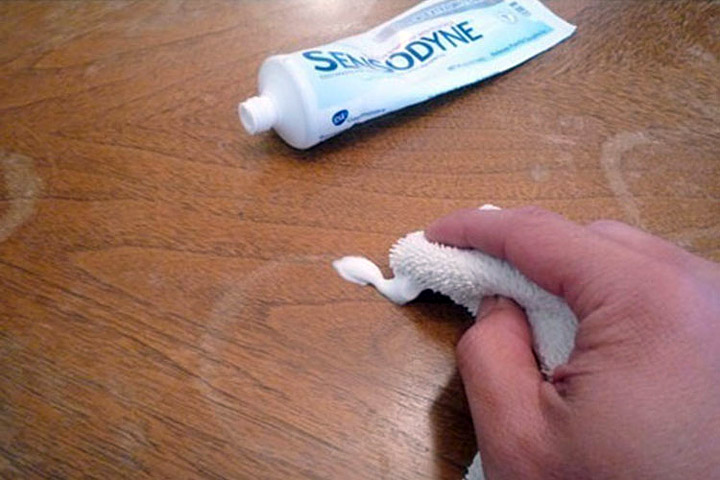
If the above methods have gotten you nowhere, walk to your bathroom, reach into the medicine cabinet, and pull out a tube of toothpaste—but not just any toothpaste. You’ll need the white, non-gel variety. Squeeze some onto a rag, then massage it onto the stain.
You shouldn’t need to scrub hard or for very long to see results. To avoid causing any further damage to the furniture in question, it’s best to concentrate your efforts only on the affected portions, because the toothpaste can wear away the finish.

If the water stain isn’t gone completely, then it may at least have lightened enough to be less noticeable. The ace up your sleeve is that, if all else fails, you can always sand the furniture down to bare wood and refinish it. (If you’re dealing with a prized piece, you may want to consult a pro.) To prevent similar damage in the future, heed your parents’ advice and use a coaster!




Leave a Reply